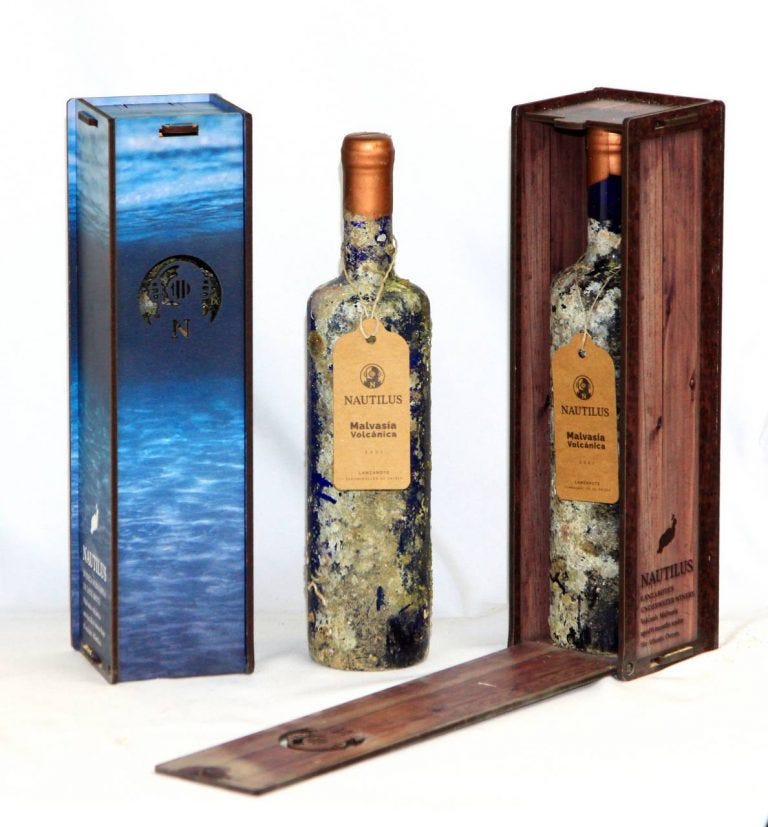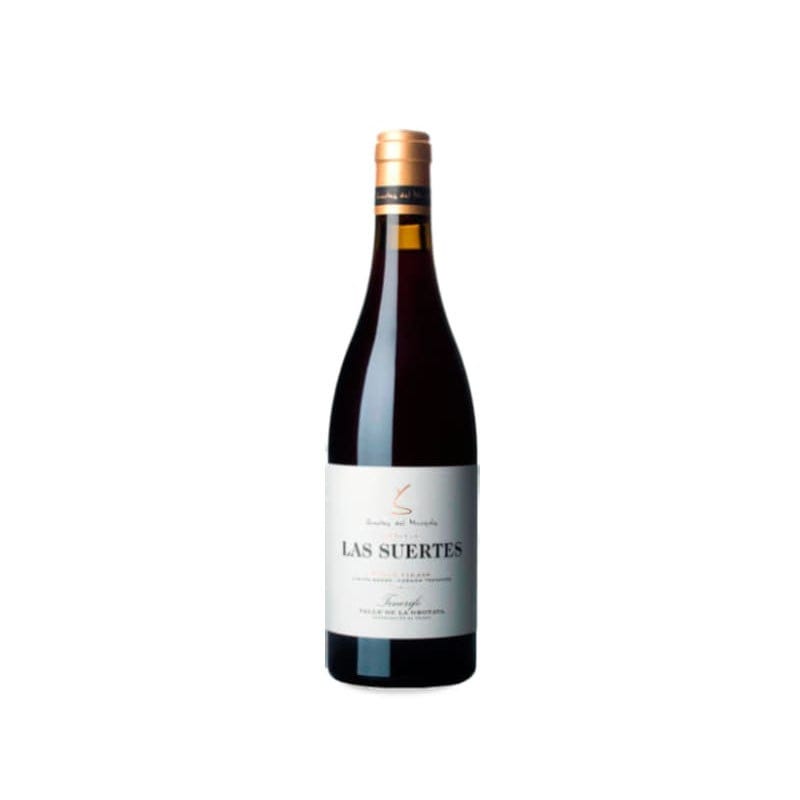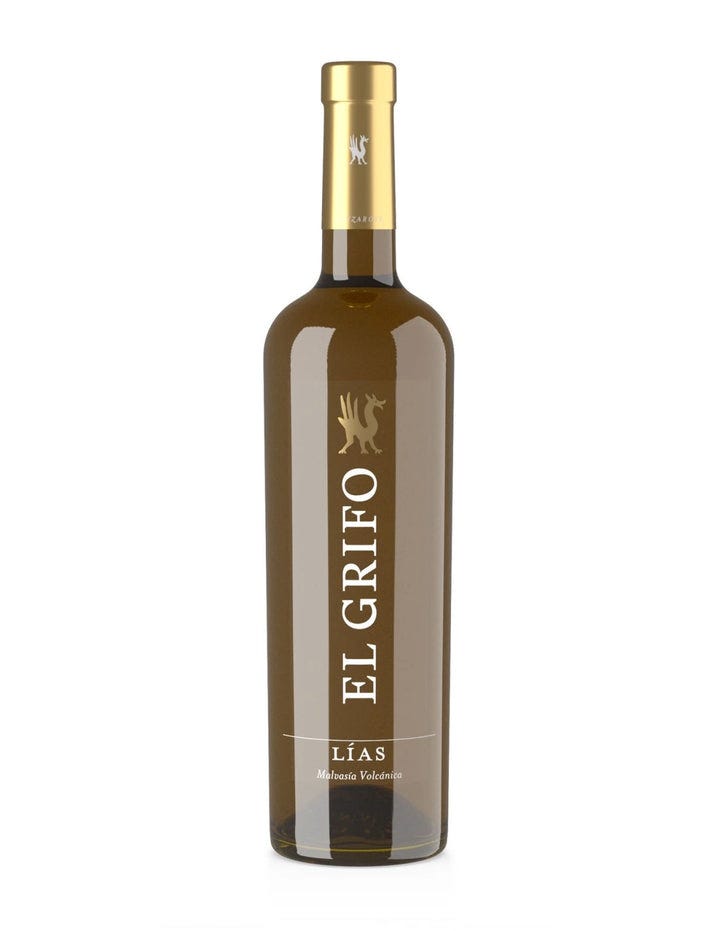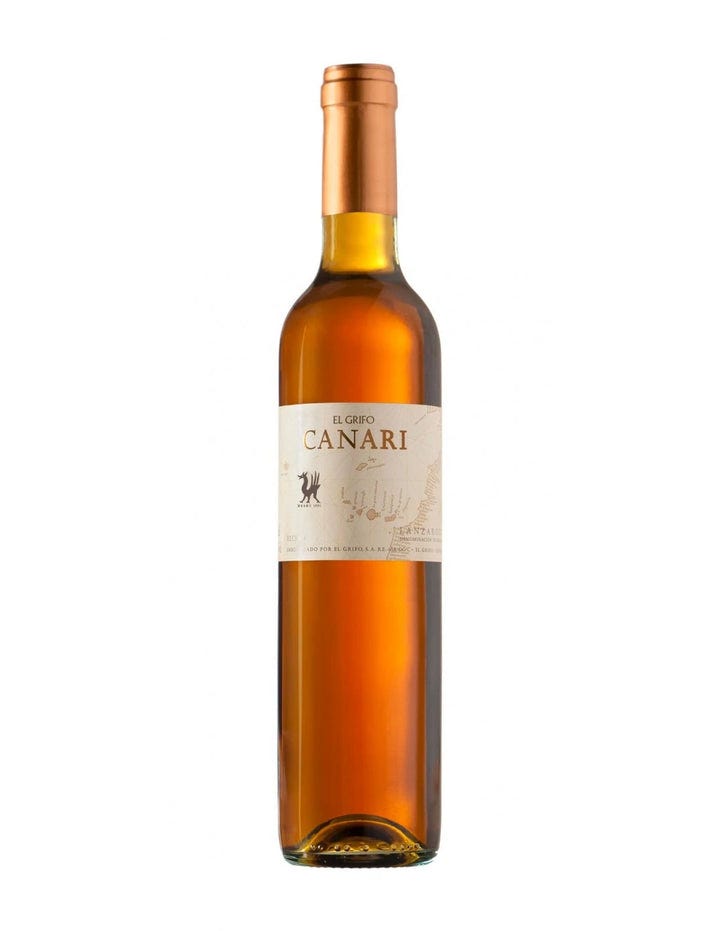Island Wines: Part 2
In last week’s blog I gave an overview of Spain's Canary Islands as a winemaking region and I promised I would follow up with tasting notes on some of their wines. So here they are.
In last week’s blog I gave an overview of Spain's Canary Islands as a winemaking region and I promised I would follow up with tasting notes on some of their wines. I can tell you’re all thirsty, so with no further ado let’s dive in.
I tasted all these wines at the Peñin Top Wines of Spain fair, so rather than giving you a broad cross-section of wines available, my choices were shaped by which wineries were attending. But it's a decent enough sample to give you a sense of what's out there.
My first stop was the Nautilus winery in Lanzarote. They are famed for being what they call an “underwater winery” – which means that once their wines are bottled they are then placed in a cage and submerged in the ocean to mature in the cold currents.
According to the winery, here under the waves, the wine benefits from a constant temperature, and 100% humidity, as well as reduced light and less oxidation. They also claim that the underwater pressure has an impact on the wine, but don’t ask me exactly what that impact is or how it works.
Now, I’m very open to innovation. And given Lanzarote is blessed with plenty of sea, it makes sense to make the most of it. But I couldn’t help feeling that this way of maturing wines is just a natural variation of cellar ageing rather than an improvement on it. So I wasn't fully sold on the concept.
Of course, the most important aspect is what’s in the bottle. And in this case it was Malvasía Volcanica Submarino 2021 (which retails on the winery’s website for €64.00 – ouch!). This is made entirely from the Malvasía Volcanica grape, which if you remember from last week, is the most common of the Malvasías you’ll find in the Canary Islands.
The wine has a nice bright aspect in the glass with a touch of gold and green, and on the nose you get a subtle mixture of flowers, citrus fruits and a hint of sulphur (but not nearly as much as other wines from the region).
Take a gulp and you enjoy soft white fruits, a light touch of sweetness, but by no means overwhelming, and a rounded and balanced finish. All in all, this is a perfectly drinkable example of a Canary Islands Malvasía. But at €64 a bottle, I want something exceptional, not just nice. So whilst I can’t fault the wine, it all felt like it was something of a gimmick.
Moving swiftly on, I found myself at the Suertes de Marqués winery in Tenerife. This is a family business with a history of grape growing, but they’ve only been producing their own wine since 2006.
The vineyard is located in the Valle de la Orotava in the north of the island, and the team takes a minimum intervention approach when it comes to winemaking. They work with local grapes, indigenous yeasts, and avoid using any chemicals in the vineyard. It’s all about keeping it natural and simple.
That said, they have an extensive list of wines, broken down into their ‘entry-level’ offerings, and the more exclusive single plot wines coming from specific vineyard plots which are vinified and bottled separately. It was these that were the focus of my attention and I jumped in to taste a couple of the higher ranking options.
The first was Vidonia 2021. It’s a white wine made from 100% Listán Blanco (you may remember last week I talked about Listán Blanco and Negro being the two most widespread indigenous grapes in the islands), and it retails online at around €40 a bottle.
The grapes are grown at between 350-500 metres above sea level – where they’ll enjoy slightly fresher growing conditions - and are from vines between 60 and 120 years old planted in volcanic soil. The vines are grown using the region’s famous Cordón Trenzado technique (see last week’s article), and once fermentation is compete, the wine is aged in oak barrels for 11 months – which is quite a bit for a white wine.
So with all that going on, what does it taste like? Very nice, is the answer. There’s a whiff of sulphur when you first sniff the wine, but that quickly subsided and gives way to a subtle waft of white flowers and light stone fruits.
But it’s in the mouth that this wine really goes to another level. Take a swig and you’re met with an initial blast of seaweed and umami that’s taken over by lovely notes of Danish pastries, before rounding off with a subtle touch of lime to gently cleanse the palate. It’s a delicious mix of mouth-warming comfort and delicate freshness. And whilst it’s certainly on the expensive side, it really is a good wine.
Next up came Las Suertes 2019, a red made from Listán Negro. These grapes are grown at 480m to 520m above sea level, so you can expect fresher results. And again are grown on vines between 80-100 years old grown in volcanic soils. As with the white, this red is aged for 11 months in oak barrels. And as with the white, a bottle is selling online for about €40.
On the nose, this was a hugely promising wine. The first sniff gave me a good dose of sulphur, but it soon subsided to leave fresh herbal and floral notes drifting round my olfactory system. If you can imagine standing on the edge of a volcano on a fresh spring day with a light breeze blowing, you’d be somewhere in the vicinity of the aromas this wine gives off.
Unfortunately, the taste didn’t live up to my expectations. There was plenty of red fruit, but it was all a bit flat. The flavours didn’t really get my taste buds popping and the whole wine seemed to run off my tongue and down the back of my throat without even pausing to say “hi!”. It was all a bit underwhelming to be honest and something of a disappointment, especially at that price.
There were other wines on the table, but I was in a hurry to get to my final tasting table where I had an appointment with history.
Located on the island of Lanzarote, Bodega El Grifo has been making wine since 1775. It’s the oldest winery in the Islands, and one of the ten oldest wineries in Spain. And for those of you with a calculator to hand, you’ll notice that next year it will be celebrating it’s 250th anniversary. There were only three wines on offer at Peñin, but what they lacked in quantity, they more than made up for in quality.
The first I tasted was the Malvasía Volcanica Sobre Lias 2022 (€22.00 on the winery’s website). It’s a 100% Malvasía Volcánica and the ‘sobre lias’ bit translates as ‘on the lees’. This is the process whereby wines are left to sit on the dead yeast cells and sediment that forms during fermentation. This gives the wine more chance to develop lots of lovely characteristics and complexity. In this case, 30% of the fermented wine is placed in a 500-litre French oak barrel, whilst the rest stays in the stainless steel fermentation tank. Both batches are then kept in contact with the lees for 7 months. Finally, the wines are blended, clarified and bottled, before being left to develop for a further 8-12 months before going on sale.
So this wine has had plenty of time to develop. And you can tell!
On the nose, you get a wonderful combination of orange peel, tropical fruits, flowers and hints of herbs. It’s an intoxicating experience that stays just on the right side of overwhelming, and manages to keep freshness to the fore.
Then in the mouth, you get a beautiful soft velvety sensation with a delicious mixture of flavours. Those citrus fruits come into their own, keeping the wine nice and fresh, and they combine with saline and mineral touches, to give you a wonderful rounded flavour that lasts well beyond swallowing. This was the least expensive of the Canary Island wines that I tasted at the fair, and it was by far the best.
Or at least the best of the still wines. But I still had a couple of sweet treats in store.
The first of those was Moscatel de Ana (€49.80 on the winery’s website), a naturally sweet liqueur wine made from the Moscatel de Alejandria variety. The grapes are grown on old vines, some of which date back to the 19th century, and are naturally ‘raisened’, which means they are left in the sun to ripen and dehydrate slightly so as to increase the proportion of natural sugars. After fermentation, the wine is aged for 30 years (yes, years!) in 500-litre oak barrels.
The result is a delicious mix of dried fruits and bready notes but with a touch of salinity and controlled sweetness, so you’re not overpowered by the sugars and the wine retains a delicate freshness. It’s soft and round in the mouth and stays with you long after the swallow. This was an exceptionally good wine, but there was one final wine to taste which, in the end, topped them all.
And it's called Canari.
One of the things I love about Spanish wine is that there exists a new and growing gerneration of winemakers who are unashamedly modern in their thinking. Yes, they call on old techniques and increasingly adopt traditional farming methods. But their approach, outlook and philosophy are bang up to date and very much looking to the future.
But it's nice at times to take a stroll through history and experience Spanish wines as they once were. And Canari let's you do just that. This is a sweet wine that harks back to the original wines that the Canary Island vineyards used to export to England back in the seventeenth century. Made from 100% Malvasia Volcanica, the grapes are partially sun dried to increase sweetness before being pressed fermented and aged in wooden barrels. And boy are they aged. These wines can sit for up to 65 years in oak, slowly developing and maturing until they reach their peak. And when they do, the team will take wines from various vintages and blend them to produce the final product.
In the case of this particular release, it's a blend of the 1956, 1970, and 1997 vintages, and only 823 bottles were made. No surprise then that it comes with a price tag of €120.
But is it good?
No.
It's outstanding.
It starts with the fruit. Take a deep breath from the glass and your nose is awash with deep, ripe fruit aromas. Raisins mix with dried apricots, candied orange peel and a gentle hint of spices. It's like inhaling Christmas.
And then comes the taste. It's silky smooth, full and round. And whilst those fruits carry over into the mouth, they are layered with toffee, caramel, and wonderful bready notes. It's a brioche desert in liquid form. It's heady, delicious, warming, and yet still manages to remain balanced and almost fresh on the palate, making it dangerously drinkable. I was absolutely smitten. If this is what the English were drinking back in the 1600s, then someone fetch me a time machine.
So, there we have it. A small selection of Canary Island wines to give you a taste of what this region is capable of. If you have a chance to pick up a bottle locally, I highly recommend it. You're almost certain to find a wine with character and a profile that sets it slightly apart from the wines of the mainland. And if you can't find a local supplier then maybe it's time to start planning your next holiday to a destination that's got much more going for it than sun, sea and sand.
Cheers!










